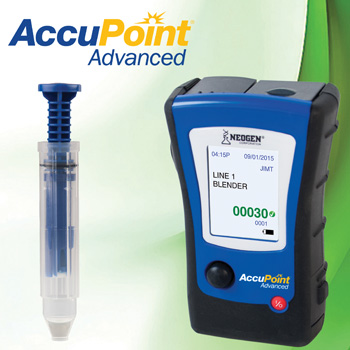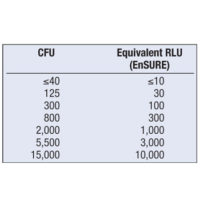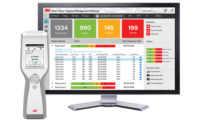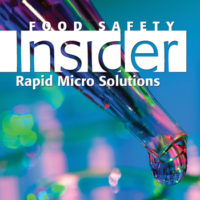Both the U.S. Food and Drug Administration and the U.S. Department of Agriculture Food Safety and Inspection Service prescribe regulations that food contact surfaces should be free of contaminants and food allergens, and that the environment be clean and sanitary. Adenosine triphosphate (ATP) hygiene monitoring can play an important role in the verification of good sanitation practices and is also a major component of the Food Safety Modernization Act. Selection of the right ATP hygiene monitoring systems can be simplified by comparing performance data of commercially available systems using realistic sampling conditions.
However, as anyone who has tried to reproduce results created inside an R&D laboratory could tell you, things are a whole lot harder in the real world. What seems so easy in a controlled environment can seem so difficult when conditions are out of your control.
This is a similar problem that manufacturers and users of ATP monitoring systems face when evaluating the performance of their own systems, or competing systems, for use in their facilities to validate and verify the effectiveness of their sanitation programs. What works so well in controlled laboratory experiments does not necessarily work so well in fast-paced and highly variable food production environments.
“Many facilities rely on ATP systems to move forward with production runs and make important decisions on personnel performance, equipment serviceability, equipment selection and modifications to their Sanitation Standard Operating Procedures. For these reasons, it is critical that an ATP hygiene monitoring system provide accurate and consistent results,” says Neogen’s Rob Soule. “When comparing these systems, it is important to use realistic evaluation criteria. Since these systems measure the amount of residue left on a surface after cleaning, studies that attempt to compare systems through direct pipetting of ATP, or a commodity, onto the sampling device’s tips, do not accurately reflect their use and miss the most critical source of sampling error—a swab’s ability to accurately and consistently extract residue remaining on the surface.”
In an effort to evaluate a number of commercially available ATP systems in real-world applications, NSF International conducted a battery of tests to objectively measure major commercial ATP hygiene monitoring systems in real-world scenarios to determine their accuracy and consistency.
To judge accuracy, a random ATP dot test was developed to evaluate the systems’ ability to recover ATP; to judge consistency, the systems’ coefficients of variation were evaluated for repeated performances on the random-dot test.
To begin, ATP standards were pipetted directly onto sample swabs. ATP standards were then deposited over a 4 in.-by-4 in. stainless steel surface, allowed to dry and then sampled. This measurement was adapted to replicate real-world operations that most often occur between tightly scheduled production runs where sampling speed is important.
In the real world, residue is not homogeneously distributed across a surface after cleaning. To re-create this phenomenon for the study, a small, invisible dot of ATP was randomly placed on stainless steel surfaces to determine the extent and consistency of each system’s ability to locate and accurately identify its presence. Ten replicates were completed on a single test day for each system.
Results of the random-dot test clearly showed that the AccuPoint Advanced system had the highest recovery of the test systems. With its flat sponge sampler, AccuPoint Advanced consistently found and accurately reported the presence of the ATP dot expressed as percent recovery. Accurate recovery of ATP from surfaces is critical in making sound decisions about whether a surface is clean or not.
As important as trace detection of existing ATP on a production surface is, a system’s ability to consistently detect levels of existing ATP is as important. As reported by the coefficient of variation, the AccuPoint Advanced system had the lowest variability of the commercial systems at 17.5%.
In a production environment, misrepresentation of the amount of ATP on a surface can result in the decision to continue with production when a surface is not truly clean or the decision to hold off on the next production run until further, potentially unnecessary, cleaning is performed.
NSF’s report stated that “Neogen’s AccuPoint Advanced ATP system consistently yielded the highest percentage of recoveries and the most consistent readings of the target analytes, when compared with the other four test systems.
“ATP devices are utilized to detect the presence of bacteria and organic/food residues on surfaces. ATP has been incorporated as a key monitoring parameter for the food, beverage and healthcare industries. It is essential that these devices provide precise and consistent readings so that the hygiene practices of these industries can be accurately evaluated.”
As the finalization of FSMA looms on the horizon and the deadlines for compliance draw near, these data are of the utmost importance. A greater significance will be placed on environmental monitoring in food production facilities.
For more information, or a copy of the NSF report, please contact Neogen at 800.234.5333 or 517.372.9200 • www.neogen.com




